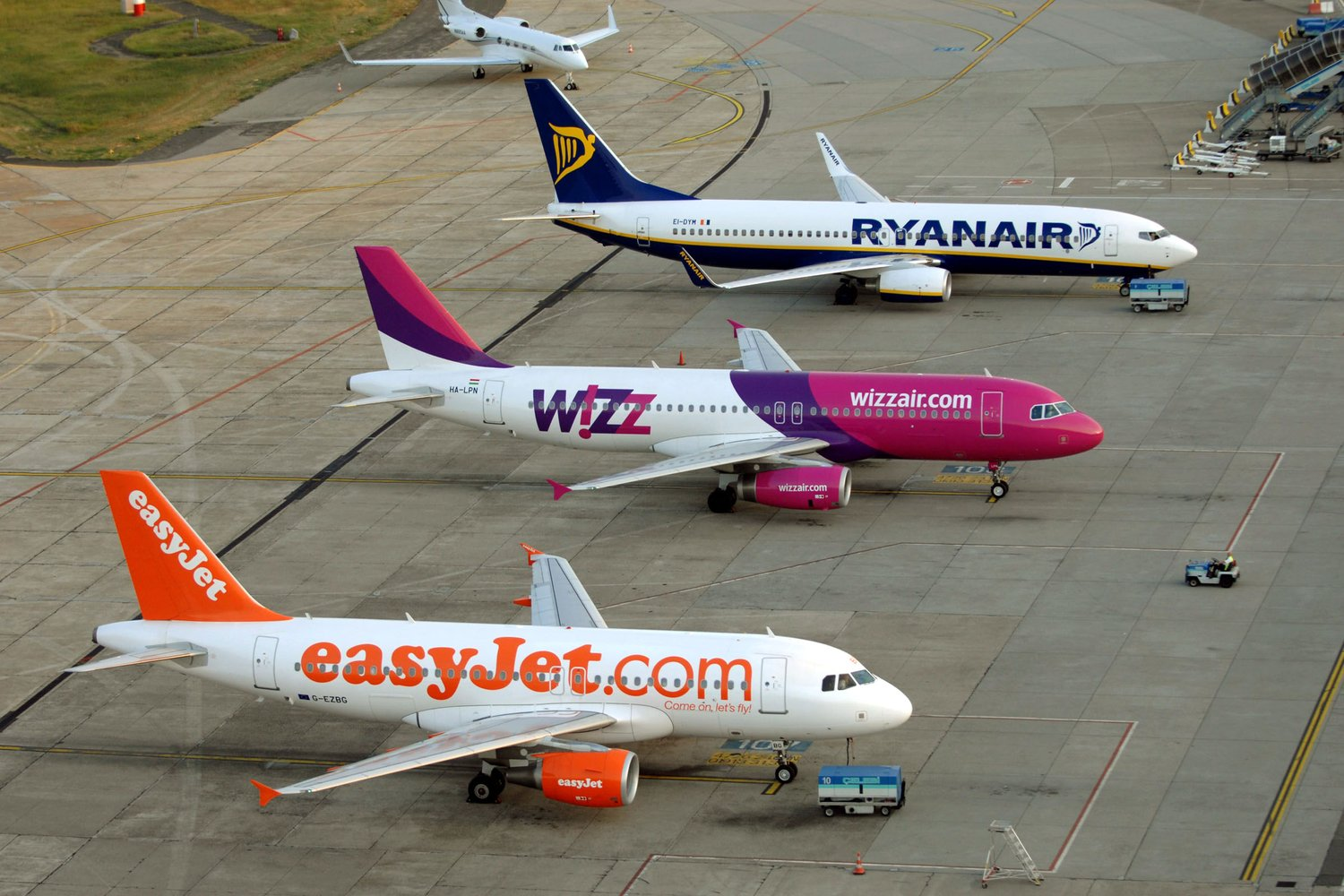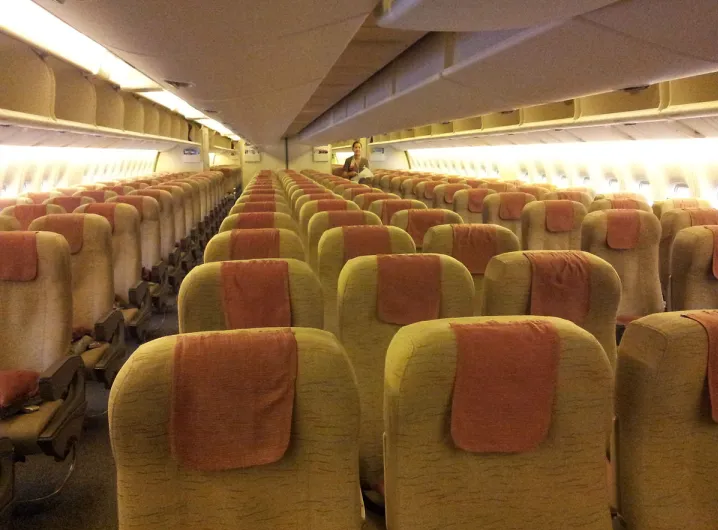Aircraft can be categorized by the width of the fuselage (tube shaped aircraft body, or the part where passengers, cargo and crew sit). Therefore, there are 2 aircraft categories that we will discuss about hereat.
Narrow-body aircraft

Narrow body planes are small aircraft that are frequently used in aviation for short-distance trips. These aircraft have a fuselage width of approximately 3 to 4 m (10–13 ft.), with a single aisle between passenger seats. As a result, narrow body planes are frequently referred to as single aisle planes or single aisle aircraft.
The cargo holds in the lower deck can, in most cases, carry only loose (bulk) cargo.

Examples of Narrow-body aircraft
- Airbus Industrie: A318, A319, A320 (see note), A321 (see note)
- Boeing: B717, B727, B737, B757
- Fokker: F100
- Boeing (Douglas): DC-9, MD-80 series, MD-90
- Antonov: AN-74, AN-148
You may concern: Airlines in Vietnam with air freight transport
Usage of narrow-body aircraft
It is commonly believed that narrow body airplanes are only suitable for short-distance flights. Despite the fact that narrow-body aircraft can only be used for long-distance or medium-distance trip, most airlines utilize them for short-distance flights.
For instance, Copa Airlines operates a Boeing 737 on average six-hour flights from Panama City to several South American locations. Or Norwegian Airline utilizes narrow body aircraft on its UK-American route. Other airlines mostly used narrow body aircraft for short-distance flights.
Wide-body aircraft
Wide-body aircraft, also known as jumbo jets, have a fuselage with a width that typically ranges from 16 to 20 feet (4.8 to 6.1 meters) in diameter.
These aircraft have an internal cabin sufficient for normal passenger seating to be divided into three axial groups by two aisles (which is why they are also known as two-aisle planes). In practice, this means that the width is not less than 4.72 m (15 ft. 6 in.).

In other words, the broad body of these planes provides the airline industry with a better capacity for carrying passengers than aircraft with a single aisle, making wide-body jets an excellent option for carriers looking to meet passenger demand without increasing the number of flights.
The main cargo holds in the lower deck are equipped to carry palletized and containerized cargo. Loose cargo is loaded in the bulk cargo hold.
Examples of wide-body aircraft
- Airbus Industrie A300, A310, A330, A340, A350, A380
- Boeing B747, B767, B777, B787
- Ilyushin IL-86, IL-96
- Boeing (Douglas) DC-10, MD-11
- Antonov AN-124, AN-224
The additional numbers, which may be seen after an aircraft type, identify a series, which differs structurally from another. For example:
Aircraft Type Series
- Airbus Industrie A310-200 A310 200
- Boeing B747-400 B747 400
- Airbus Industrie A380-800 A380 800
- Boeing B787-800 B787 800
Usage of wide-body aircraft
Furthermore, what distinguishes wide-body aircraft from narrow-body aircraft is not merely their width; bigger fuselages result in a broader wingspan. This results in more efficient lift and greater flying stability. Moreover, wide-body aircraft frequently feature a more roomy and comfortable cabin than narrow-body aircraft since they have greater internal space.
United Airlines and other major airlines, for example, use the extra room to provide more comfort in their business class configurations. For long-haul flights, several major airlines even provide entire beds to business-class guests.
Wide body aircraft are used both in commercial passengers flights and cargo services by hundreds of airlines worldwide.
Further details about aircraft categories
Narrow-body and wide-body aircraft can be further divided into:
- All cargo or freighter aircraft, carrying cargo and mail on the main and lower decks;
- Passenger aircraft, carrying passengers on the main deck, while cargo and mail are transported in the lower deck; and
- Mixed passenger/freighter aircraft (Combi), which is a combination o freighter and passenger aircraft layouts. The main deck transports both passengers and freight. Generally, the main deck of the Combi is divided into two sections and separated by a temporary wall. One of these parts’ seats is removed and modified to carry solely cargo. Cargo and mail can also be transported on the lower deck.
Convertible aircraft may be quickly converted from a “all passenger” to a “all cargo” configuration and vice versa. Depending on market demand, airlines can switch between passenger and cargo configurations on a daily, weekly, or seasonal basis.
The fact that a given flight is operated by a freighter or a combi aircraft is usually indicated by the aircraft code itself. For example:
- Boeing (Douglas) MD-11F (F for cargo freighter)
- Boeing B747-357M (M for mixed = combi)
The aircraft cargo capabilities are indicated in air cargo schedules by a code in the column headed Class in the OAG Cargo Guide.
Conclusion
Wide-body aircraft offer many advantages as well as their narrow-body counterparts, but they come with some disadvantages as well. While determining which sort of aircraft categories is best for their purposes, aviation experts must carefully consider these pros and cons.
Above is a short guide to aircraft categories by fuselage’s size.
You may concern:
Express delivery form Vietnam to Texas
The Definition and Function of Air Transportation




